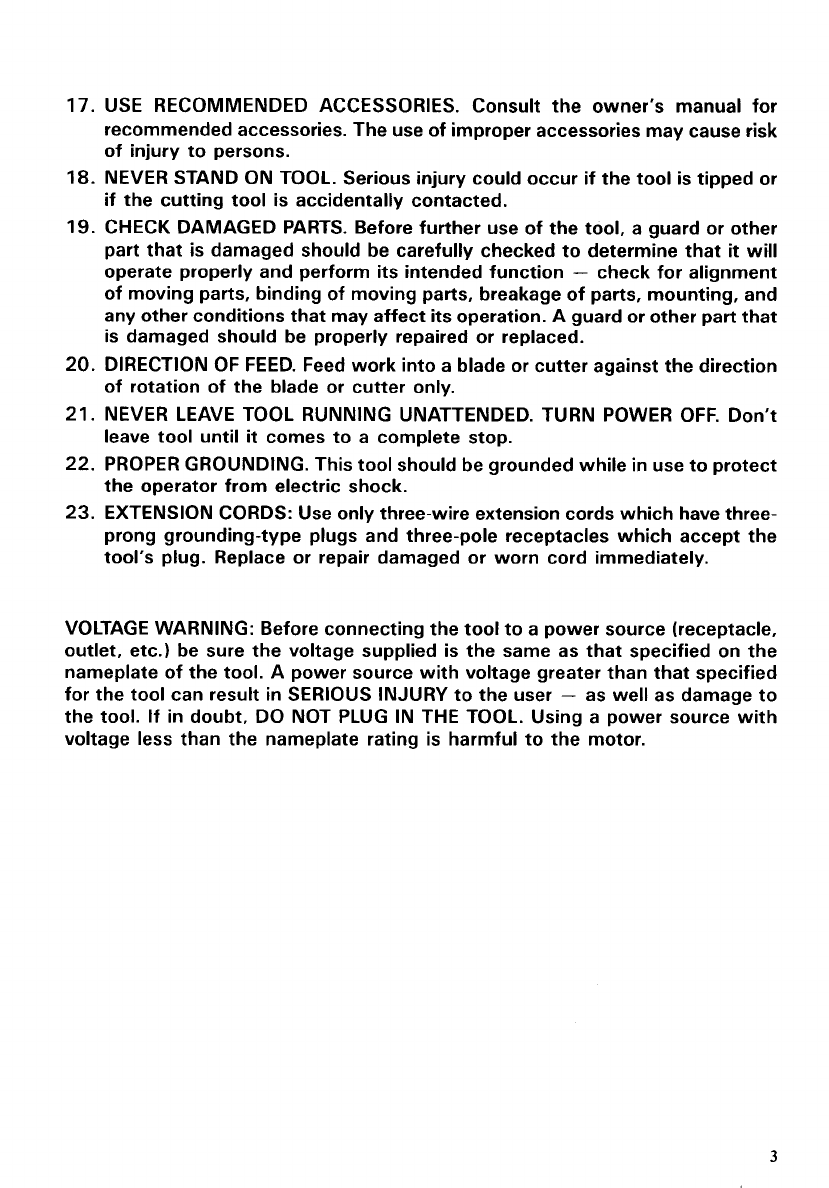
17. USE RECOMMENDED ACCESSORIES. Consult the owner’s manual for
recommended accessories. The use of improper accessories may cause risk
of injury to persons.
18.
NEVER STAND ON TOOL. Serious injury could occur if the tool is tipped or
if the cutting tool is accidentally contacted.
19.
CHECK DAMAGED PARTS. Before further use of the tool, a guard or other
part that is damaged should be carefully checked to determine that
it
will
operate properly and perform its intended function
-
check for alignment
of moving parts, binding
of
moving parts, breakage of parts, mounting, and
any other conditions that may affect its operation.
A
guard or other part that
is damaged should be properly repaired or replaced.
20.
DIRECTION OF FEED. Feed work into a blade or cutter against the direction
of
rotation of the blade or cutter only.
21. NEVER LEAVE TOOL RUNNING UNATTENDED. TURN POWER OFF. Don’t
leave tool until
it
comes to a complete stop.
22. PROPER GROUNDING. This tool should be grounded while in use to protect
the operator from electric shock.
23.
EXTENSION CORDS: Use only three-wire extension cords which have three-
prong grounding-type plugs and three-pole receptacles which accept the
tool’s plug. Replace or repair damaged or worn cord immediately.
VOLTAGE WARNING: Before connecting the tool to a power source (receptacle,
outlet, etc.) be sure the voltage supplied is the same as that specified on the
nameplate of the tool. A power source with voltage greater than that specified
for the tool can result in SERIOUS INJURY to the user
-
as well as damage to
the tool.
If
in doubt, DO NOT PLUG IN THE TOOL. Using a power source with
voltage less than the nameplate rating is harmful to the motor.
3


















